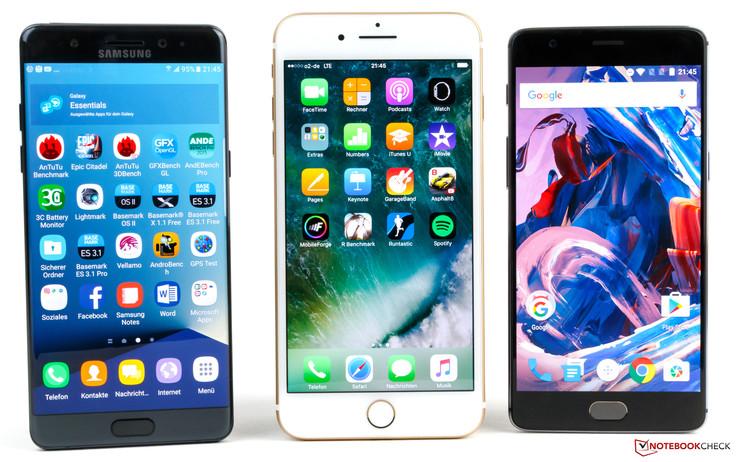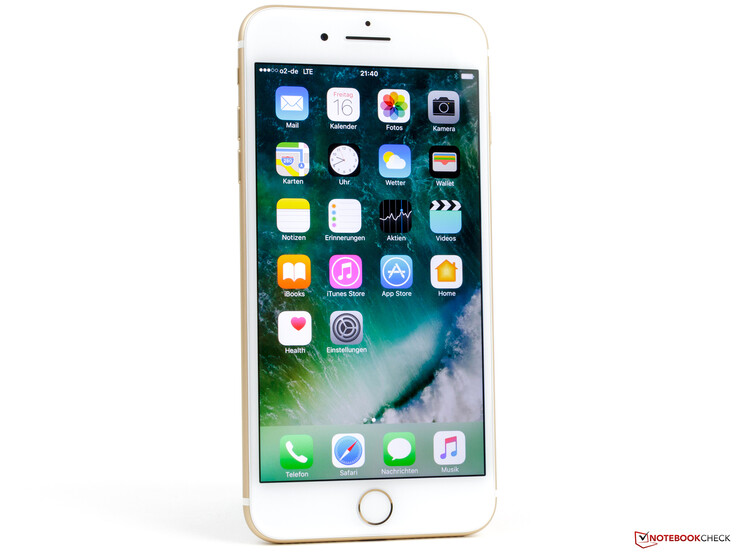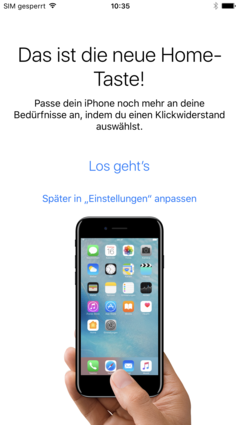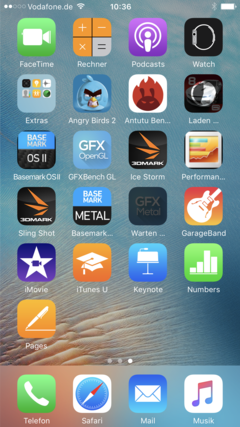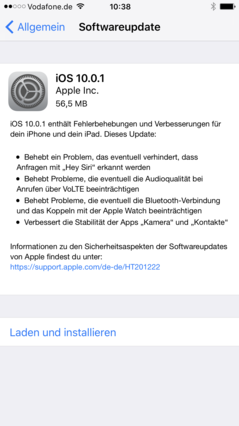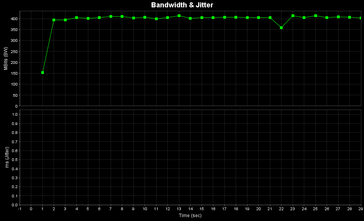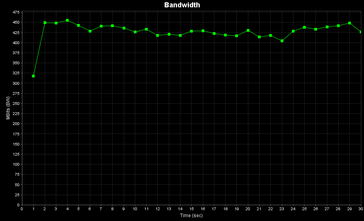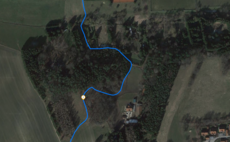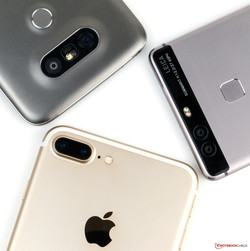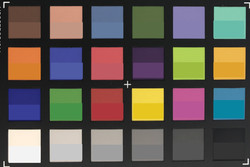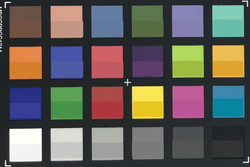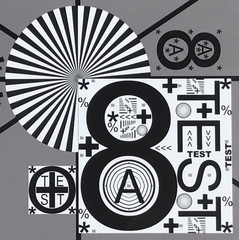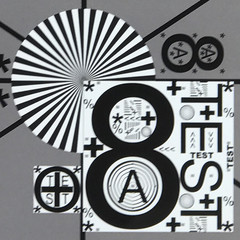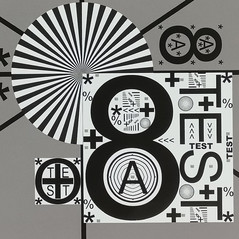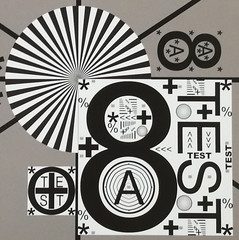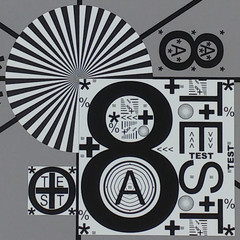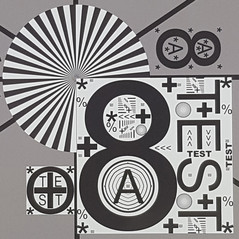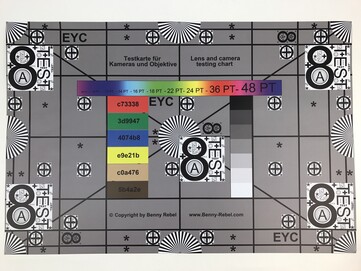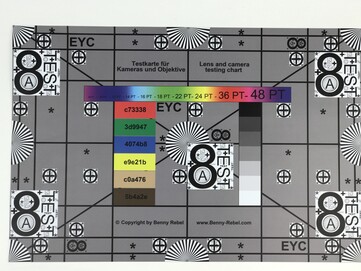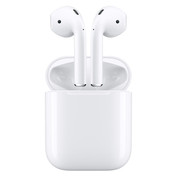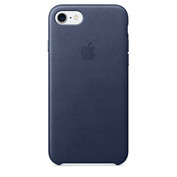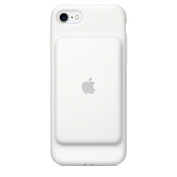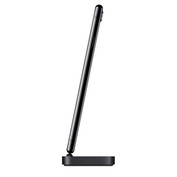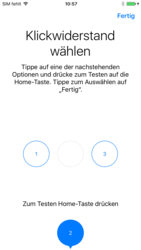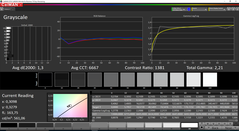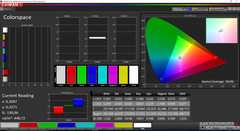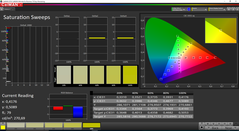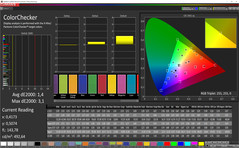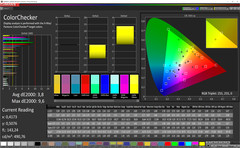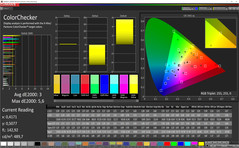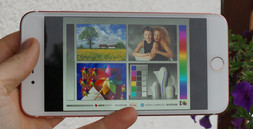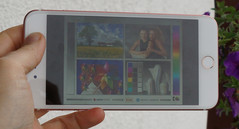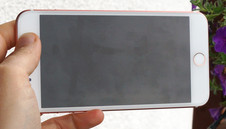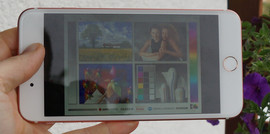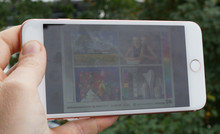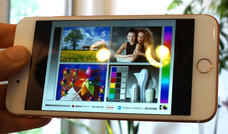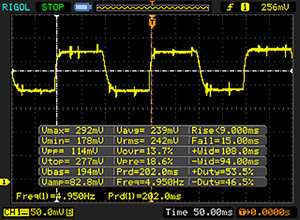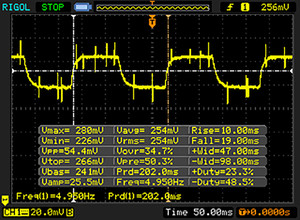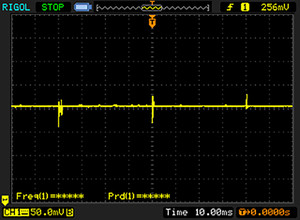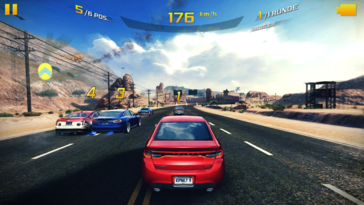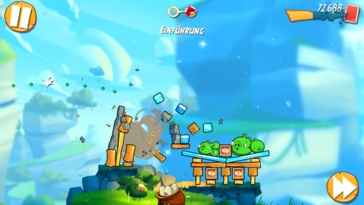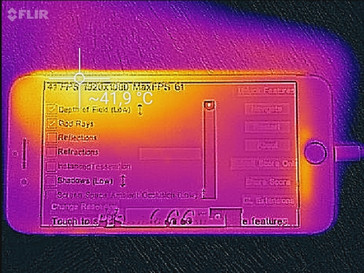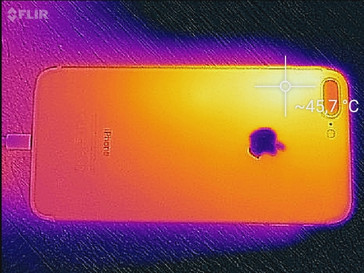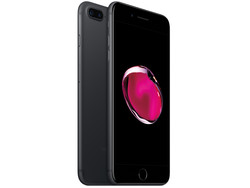Apple iPhone 7 Plus Smartphone Review
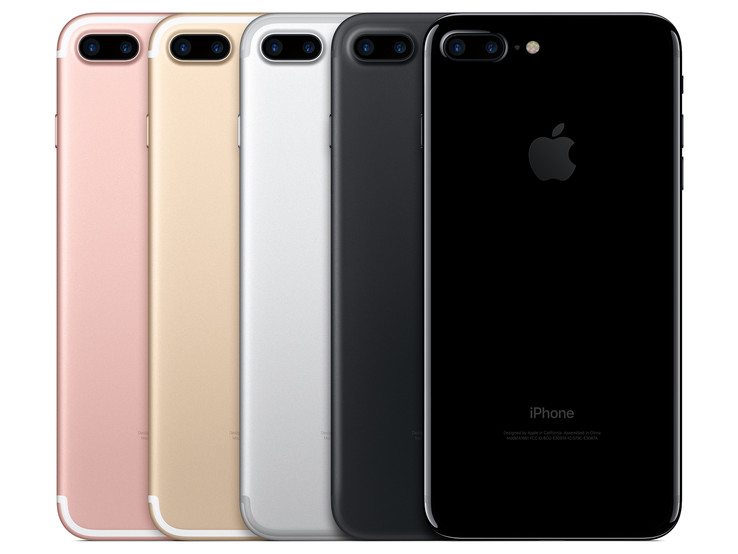
For the original German review, see here.
Most facts were already known ahead of the launch event for the new smartphones from Cupertino: The devices will be called iPhone 7 and 7 Plus and there are just minor visual changes – but there are still a lot of new features.
The Apple iPhone 7 Plus now has two cameras with different focal lengths, one wide angle lens and one telephoto lens. This means that pictures taken with the smaller angle can be taken without digital losses – at least with a 2x zoom. Apple has also implemented its latest chip generation, A10 Fusion, which is once again supposed to be much faster than the older generations. Furthermore, Apple says that there are improvements for the cameras as well as the display. Phil Schiller promised higher luminance and wider color gamut during the keynote presentation. We also get stereo speakers and a chassis with protection against water and dust. The Home button is no longer a mechanical button, but a pressure and touch sensitive surface instead. There are also two new colors. Black as well as Jet Black with a glossy finish, which is also the color of our review unit. By the way: Apple has also dispensed with something. The analog headphone jack is gone and the sound output is now handled by the Lightning port.
Case
As with the iPhone 7, the case of the iPhone 7 Plus does not really look that different compared to the predecessor. You can still easily distinguish the iPhone 7 Plus from previous generations thanks to the dual-camera at the back.
The iPhone 7 Plus is available in Silver, Gold, Roségold and for the first time also in Black as well as Jet Black. The latter color is a glossy black, which is supposed to be just as durable as the other models. The iPhone 7 Plus like its smaller model is protected according to IP67, which means that you can submerge it in up to 1 meter (~3 ft) deep in fresh water for up to 30 minutes and is also protected against dust. Based on initial videos on the Internet, Apple uses fine mesh inlays behind the speakers and the microphone as well as special adhesives.
The videos also speak about the fact that neither the iPhone 7 Plus nor its smaller sibling bend in the pocket anymore, but the display becomes loose from the frame under a lot of pressure, so you should not sit on the smartphone. The camera lenses as well as the screen and the aluminum at the back are quite scratch-resistant, even a key cannot damage the rear as shown in the video. You should not have razor blades in your pocket though, but this is not really recommended anyway...
The overall chassis quality of the iPhone 7 plus is just as sophisticated as the predecessors, and there does not seem to be a "Bendgate" according to the initial videos on the Internet. The aluminum and glass materials are once again well-chosen and elegant, and the subtle colors work well in most environments.
The dimensions of the iPhone 7 Plus are identical to the predecessor, but it is 4 grams (~0.14 oz) lighter than before. At 188 grams (~6.6 oz), it is still one of the heaviest 5.5-inch smartphones.
Connectivity
Apple ships the iPhone 7 Plus with 3 GB of RAM and therefore one GB more than the iPhone 7 and the iPhone 6s Plus. This should be an advantage for the multi-tasking performance of the smartphone and even demanding graphics should be possible.
The ports are similar on the iPhone 7 and iPhone 7 Plus. Apple has also dispensed with the 3.5 mm headphone jack for the larger model, but includes an adapter for the conventional headphones at the Lightning port. The Lightning connector is also the only physical connector on the iPhone 7 Plus, but this also means that you will need a split-adapter or the Lightning Dock when you want to listen to music and charge the smartphone at the same time, but both will cost quite a bit.
Speaking of prices: The iPhone 7 Plus is available with different storage capacities, which also define the price. The 32 GB model retails for $769, the 128 GB model for $869 and the 256 GB model for $969. The price and capacity jumps are similar to the smaller iPhone 7.
The iPhone 7 Plus is similar to the smaller sibling in terms of sensors and wireless communication, so we refer to the corresponding review.
Software
Coinciding with the release of the iPhone 7 and iPhone 7 Plus, Apple has also launched iOS 10, the latest software version of the mobile operating system. The most noticeable changes for experienced iOS users start with the wake from standby: The screen of the iPhone 7 Plus will be activated when you lift the smartphone. It will therefore happen quite often at first that you accidentally put it back in standby, because you are just used to pressing the corresponding button.
The next step, unlocking the device, has also changed: "Slide to unlock" is gone; a swipe to the right launches the notification screen. You can now unlock the device via the Home button.
Otherwise, most changes are hardly visible for many users. Once again, Apple has closed some security gaps and Siri can now be used by third-party apps. The notification on the lock screen has also been expanded and can now show pictures and videos or you can instantly reply to messages. The other changes of the biggest iOS release (according to Apple) are only noticeable when you launch Apple's apps:
A lot of work has been put into iMessage. Apple probably realized that the competition from WhatsApp and SnapChat is getting bigger. The new features for the messenger are therefore very modern: You can write handwritten messages, which will appear gradually as you would just write them. Individual words can automatically be replaced by Emojis and there are fullscreen animations when you write "Happy Birthday" or the like.
It is also possible to surprise somebody by sending a hidden picture, which has to be uncovered by the recipient first. There are quick replies for fast answers, and messages can be decorated with pictures or stickers. Some features were copied from SnapChat, like equipping pictures and videos with animations and other elements. There are also apps for iMessage, where further functions can be used directly within the app.
Maps are supposed to be smarter and think about possible destinations depending on your current location. These suggestions are displayed directly. It is also possible to get a table in participating restaurants. The app can now show gas stations along the route, for example, when you use the navigation.
The new Home app can be used to control your smart home; pictures are now automatically sorted by items and people and therefore tagged. It is, for instance, possible to look for pictures on the beach, which will then be displayed.
Text inputs are now even more connected with user information. The iPhone will automatically suggest phone numbers when somebody wants to send a phone number or shows free spots in the calendar if you want to meet somebody.
Apple still promises to encrypt all transmitted user data and not use them to create user profiles.
More information about iOS 10 is available in the review of the iPhone 7.
Communication and GPS
The communication modules of the Apple iPhone 7 Plus are identical to those of the iPhone 7. Our colleagues from iFixit found out that the Qualcomm modem MDM9645M handles the communication. This is actually an LTE Cat. 12 module, but the released specifications suggest that it is only working according to the LTE Cat. 9 standard due to the maximum download speed of up to 450 MB/s. This is, however, only the case for the models in the U.S., Japan and China. European models are equipped with the modem Intel XMM7360, which is supposed to be a bit slower according to the colleagues from Cellular Insights. Apple does not make any compromises in terms of frequencies and supports 23 LTE bands, four of them TDD-LTE bands. The coverage for HSPA+ and GSM networks does not leave anything to be desired. Even frequent travelers should get a connection in all parts of the world.
While the Apple iPad Pro 9.7 was equipped with an additional eSIM, we would have expected this from the iPhone 7 Plus as well. But this is not the case as there is only the usual slot for a Nano-SIM card. This is rather unfortunate, because the worldwide usability would have been better for some travelers with an eSIM. The signal quality of the iPhone 7 Plus was inconspicuous in the metropolitan O2 and Vodafone networks. We always had a stable LTE connection, even indoors.
Nothing has changed compared to the iPhone 6s Plus in terms of the WLAN module. It still supports the common IEEE 802.11 standards a/b/g/n/ac in the 2.4 and 5 GHz networks. This is the first time that we can perform our networking test with our reference router Linksys EA8500 and the iPhone. The transfer rates are quite high compared to most Android rivals, only Lenovo is better. The data connection is very stable in practice at a distance of about 12 meters (~39 ft) from the router and through one wall, and the signal quality can still be called very good. Websites opened quickly in the browser.
| Networking | |
| iperf Server (receive) TCP 1 m | |
| Lenovo Moto Z | |
| Apple iPhone 7 Plus | |
| Samsung Galaxy S7 Edge | |
| OnePlus 3 | |
| Huawei P9 | |
| iperf Client (transmit) TCP 1 m | |
| Apple iPhone 7 Plus | |
| Lenovo Moto Z | |
| Samsung Galaxy S7 Edge | |
| OnePlus 3 | |
| Huawei P9 | |
So far, Apple smartphones have always been pretty convincing in terms of GPS signal quality and accuracy. This is also the case for the iPhone 7 Plus. The initial sat fix took only a couple of seconds, and the location works even indoors – at least in proximity to windows. However, like its smaller sibling, the GPS sensor of the big iPhone is a little too sensitive. The problem is not that big on the iPhone 7 Plus, but the comparison with the navigation device from Garmin, which was specifically designed for cyclists, reveals some minor deviations and detours that we did not take. The course from the Garmin Edge 500 is much closer to reality. This also explains the small difference for the track length from the Apple flagship. Nevertheless, it works well in practice for outdoor navigation purposes, but the results are not quite as good as with the predecessor.
Telephone and Voice Quality
Some details of the Phone app have changed since iOS 9: One feature can create written text from calls on the mailbox, for example, so you do not have to listen to them. External providers can also display when an incoming call is an advertisement. Voice-over-IP apps such as Skype or WhatsApp can now use the full size of the lock screen thanks to a new API, so they are not limited to a notification when you get a call. The iPhone also remembers what apps you usually use to call a person and connects the "Call" button in the contacts app directly with this app.
The handling of the app itself has not changed since a couple of iPhone generations ago. However, this is basically not necessary because you can quickly access contacts as well as favorites and the handling is very structured.
The voice quality of the iPhone was not really a highlight of the iPhone 6s, especially when you consider the high price of the devices: The voice of our call partner was easy to understand, but the somewhat tinny sound always reminds us we are making a call. Other smartphones such as the Samsung Galaxy S7 and particularly models from Sony's Xperia series offer a much clearer and direct voice quality, where you almost have the feeling that you are standing next to each other. The microphone of the iPhone 7 Plus also transmitted our voice a bit tinny and the noise suppression did not work perfectly, either.
Making calls via the integrated speaker works well as long as the environment is not too loud. The voice of our call partner is also pretty clear, but once again, the microphone causes problems and our voice sounds tinny.
Voice-over-LTE was not yet active for our initial test calls, but we will still test this feature.
Cameras
The cameras were completely reworked for the Apple iPhone 7 Plus. For the first time, a 7 MP sensor with fixed focus is installed in the front. Good light sensitivity is supposed to be ensured by the small aperture f/2.2 and the color range is also supposed to be better. Videos can be recorded in Full HD (1920x1080 pixels). You also get an automatic HDR function as well as body and facial recognition. As with the iPhone 6s Plus, the display can be used as the so-called Retina Flash. The quality of the pictures is comparatively good, but we think the pictures from the front camera of the Galaxy Note 7 (5 MP, f/1.7) are slightly better. The higher resolution is also hardly noticeable compared to the predecessor. Additional Beauty modes for selfie fans are not available.
The changes are much greater for the main camera at the back. Apple is using a dual-camera setup for the first time, but the concept is completely different compared to Huawei's P9 with its additional black-white sensor and also the LG G5. While the smaller sensor offers the wide angle in the case of the LG, Apple has implemented two very similar 12 MP sensors. The usual camera is now advertised as wide angle lens with a light-sensitive f/1.8 aperture. The second camera is advertised as Telephoto and does not capture that much light at f/2.8, but gets the object much closer (2x). The optical image stabilizer (OIS) is only available for the wide-angle. The different light sensitivity is particularly noticeable in low-light situations or dark environments, because we can see much more noise on the Telephoto. Otherwise, however, the quality of the two sensors is almost identical in daylight. If you want to get even closer, you can use the digital zoom, which was highlighted at Apple's keynote. The digital zoom of the iPhone 7 Plus is actually surprisingly clear. The manufacturer makes use of the Telephoto lens, which does not capture that much light and is also pretty shaky at the maximum zoom (10x), but the results are better compared to the Galaxy Note 7 (up to 8x digital zoom).
The picture quality of the iPhone 7 is identical to that of the smaller sibling as long as you use the wide angle lens. The pictures have a comparatively high dynamic range and good sharpness. The Galaxy Note 7, which is equipped with the camera module from Samsung's S7 series, takes even slightly better pictures though, but this is criticism on a very high level. The apple picture (scene 1) shows that the camera of the Samsung phablet has a wider dynamic range. This is easy to see in the details of the leaves, but the iPhone 7 captures the sky in the background better, while the Note 7 shows overexposure in some places. The numerous details in scene 2 quickly show the higher sharpness of the Note 7, and we prefer the slightly warmer white balance, while the iPhone 7 is much cooler. The green colors also look rather pale. Huawei chooses a completely different approach for the P9, where the pictures are very warm and saturated and almost look a bit artistic, but also very vivid. The pictures of the P9 also look a bit sharper, but have a lower dynamic range.
The iPhone 7 Plus takes much better pictures than its predecessor in dark environments and now captures much more light and details. However, the performance of the test model is not sufficient to keep up with the Note 7. It just captures more light, so the pictures look clearer and you can see more details. Huawei falls behind here, because many details are just swallowed by the dark, and the red hue is too strong.
As with the smaller sibling, the trigger speed of the iPhone 7 Plus is good when the object is moving, but cannot quite keep up with the Note 7, which does not show any serious delay in this case. The P9 is noticeably slower. The autofocus of the iPhone 7 Plus is still pretty fast and adjusts quickly to new lighting conditions.
Nothing has changed in terms of video capabilities for the iPhone 7 Plus compared to the predecessor. 720p videos (1280x720 pixels) are captured at up to 240 frames per second, Full HD videos (1920x1080 pixels) either at 30, 60, or 120 frames per second and high-resolution Ultra-HD videos (4K, 3840x2160 pixels) at 30 fps. The visual quality of the recordings is really good and lighting changes are quickly compensated. Fast movements are no problem for the iPhone, either. The Telephoto lens is interesting for filming and works really well in good lighting conditions. There is, however, much more noise in low-light situations or at night and the pictures are also darker due to the lower light sensitivity of the Telephoto lens. The sound quality of the microphone was unfortunately not perfect and you can hear a murmur, especially in quieter environments.
We also had a closer look at the camera performance of the iPhone 7 Plus under controlled lighting conditions. The pictures are not edited afterwards and the white balance is not adjusted. We use the ColorChecker Passport for the color accuracy. Unlike the environment shot (scene 2), the white balance is warmer, and we can also notice differences between the wide angle and the Telephoto lens. The latter has a cooler white balance, which is very close to pure white without drifting towards blue. Some colors are very natural, like light blue and lavender. Colors with a high percentage of yellow are a bit too pale, earthy tones on the other hand are very rich. Green is a bit pale as well, which can be a result of the camera's P3 color space, which has a smaller green spectrum compared to AdobeRGB, but more shades of red in return. Blue colors are very saturated.
The process is similar with our test chart, which is photographed under identical conditions. Once again we immediately noticed the slightly too pale yellow areas. The iPhone 7 Plus leaves a good impression in terms of sharpness, and we can only criticize on a high level when we have a closer look. The individual rings in the circle structure within the central Eight are hard to recognize at all. They are much easier to see in the picture from the Note 7, while this is only the case for the black-white sensor of the P9, whereas the RGB sensor is not as sharp. The LG G5 and the OnePlus 3 are also sharper than the iPhone 7 Plus in the center. We can also see that details are blurrier with the Telephoto lens since camera shakes have a bigger impact and there is also no OIS for this part of the camera.
Accessories and Warranty
Traditionally, the accessory situation is very good for the iPhones. It does not matter if you want a zoom lens for the camera, a waterproof case, mount or cover – if it is not provided by Apple, it will be sold by one of the countless third-party companies.
Apple focused on the wireless AirPods during the keynote. They basically look like regular EarPods, but without the cable. Instead, they connect via Bluetooth. The AirPods will retail for $159 and will be available from late October.
For $45, you can get the familiar leather case in seven different colors. Longer battery runtimes are possible with the Smart Battery Case with an additional battery in two colors for $99.
The Lightning Dock can be used to charge the iPhone, synchronize it with your Mac or PC and attach speakers via 3.5 mm cable. It retails for $49 and is available in five colors.
Apple offers a 12-month warranty for the iPhone 7 Plus. It is possible to extend this service to a two-year warranty via AppleCare+, which retails for $129 for the iPhone 7. It also covers two accidental damages, although in combination with a fee ($29 for screen damage, $99 for any other damage).
Input Devices and Handling
The central control element of the new iPhone 7 Plus is still the Home button, so Apple has remained true to itself. The functionality of the button, however, has changed completely, but more from a technological than an ergonomic perspective. The handling is basically identical; the only difference is that the Home button is no longer a mechanical button, but pressure-sensitive. The key component here is the Taptic Engine, which gives a tactile feedback when you press the Home button and therefore confirms inputs or indicates wrong Touch ID inputs. The fingerprint scanner is obviously still included and works just as reliably as before.
Except for the new Home button, the input devices have not changed, so we recommend the reviews of the smaller sibling and the predecessor for further information.
Display
As with its smaller sibling, Apple also promises an improved display for the iPhone 7 Plus. This primarily includes a higher luminance and wider color gamut. Apple targets the P3 color space, which is common for the American movie industry. It is supposed to ensure more vivid colors for pictures and videos. Nothing has changed in terms of size and resolution of the Retina HD display. We still get Full HD on 5.5 inches, and competitors such as the LG G5 or the Samsung Galaxy Note 7 are a step ahead in terms of resolution. Nevertheless, as long as you do not use a VR headset, the 1920x1080 pixels of the iPhone 7 Plus provide sharp pictures, and the GPU is not stressed as much.
We start with our measurement results. The average luminance is 553 cd/m² across nine measurement points with a maximum of 558 cd/m² in the lower center. The brightness is therefore on par with the Apple iPhone 6s Plus, but the brightness distribution is much better and excellent at 97%. The iPhone 7 Plus also beats the predecessor when the brightness sensor is active, where we can measure up to 620 cd/m². However, the brightness distribution suffers a bit in this case and the luminance also fluctuates slightly. The additional brightness is still welcome when you use the iPhone in the sun. If you prefer to use the smartphone in dark environments, you will be happy about the low minimum value of just 2.3 cd/m².
One aspect where the display of the iPhone 7 Plus is much better than before is the black value. At just 0.35 cd/m², the Apple flagship manages a great contrast ratio of 1591:1.
| |||||||||||||||||||||||||
Brightness Distribution: 97 %
Center on Battery: 558 cd/m²
Contrast: 1591:1 (Black: 0.35 cd/m²)
ΔE ColorChecker Calman: 1.4 | ∀{0.5-29.43 Ø4.78}
ΔE Greyscale Calman: 1.3 | ∀{0.09-98 Ø5}
99.9% sRGB (Calman 2D)
99.83% sRGB (Argyll 1.6.3 3D)
63.1% AdobeRGB 1998 (Argyll 1.6.3 3D)
69% AdobeRGB 1998 (Argyll 3D)
99.8% sRGB (Argyll 3D)
67.2% Display P3 (Argyll 3D)
Gamma: 2.21
CCT: 6667 K
| Apple iPhone 7 Plus IPS, 1920x1080, 5.5" | Apple iPhone 6S Plus IPS, 1920x1080, 5.5" | Samsung Galaxy S7 Edge Super AMOLED, 2560x1440, 5.5" | Samsung Galaxy Note 7 Dual Edge Super AMOLED, 2560x1440, 5.7" | OnePlus 3 Optic-AMOLED, 1920x1080, 5.5" | Huawei P9 IPS-NEO, JDI, 1920x1080, 5.2" | |
|---|---|---|---|---|---|---|
| Screen | -46% | -3% | -12% | -82% | -61% | |
| Brightness middle (cd/m²) | 557 | 583 5% | 554 -1% | 544 -2% | 419 -25% | 582 4% |
| Brightness (cd/m²) | 553 | 560 1% | 552 0% | 523 -5% | 431 -22% | 563 2% |
| Brightness Distribution (%) | 97 | 91 -6% | 96 -1% | 84 -13% | 84 -13% | 91 -6% |
| Black Level * (cd/m²) | 0.35 | 0.46 -31% | 0.38 -9% | |||
| Contrast (:1) | 1591 | 1267 -20% | 1532 -4% | |||
| Colorchecker dE 2000 * | 1.4 | 3.55 -154% | 1.59 -14% | 1.9 -36% | 4.1 -193% | 4.4 -214% |
| Colorchecker dE 2000 max. * | 3.1 | 2.56 17% | 4.2 -35% | 12 -287% | 7.4 -139% | |
| Greyscale dE 2000 * | 1.3 | 3.88 -198% | 2.01 -55% | 1.8 -38% | 3.3 -154% | 4.8 -269% |
| Gamma | 2.21 100% | 2.2 100% | 2.01 109% | 2.12 104% | 2.1 105% | 2.2 100% |
| CCT | 6667 97% | 7280 89% | 6321 103% | 6449 101% | 6550 99% | 6175 105% |
| Color Space (Percent of AdobeRGB 1998) (%) | 63.1 | 59.05 -6% | 82.12 30% | 83.92 33% | 89.38 42% | 77.78 23% |
| Color Space (Percent of sRGB) (%) | 99.83 | 92.8 -7% | 99.98 0% | 100 0% | 100 0% | 99.44 0% |
* ... smaller is better
Subjectively, the display of the iPhone 7 Plus leaves a very good impression. Colors are rich, but still natural. The rich blacks ensure a good presentation of dark contents, and the high contrast results in a good differentiation. The colorimeter supports this impression, but also shows: The display is pretty much perfectly tuned to the sRGB color space. The deviations of the advertised P3 color space are much bigger – but still completely okay. The AdobeRGB results on the other hand are not that accurate. The grayscale performance of the display is excellent and the color temperature is almost perfect.
Overall, the Apple iPhone certainly offers one of the best smartphone displays you can currently get. This is also confirmed by the comparison with the high-end rivals.
As with the iPhone 7, the display of the larger iPhone 7 Plus leaves a pretty good impression outdoors. The usability under direct sunlight is limited due to the glossy screen surface, but you can still see the display content in bright environments thanks to the high luminance. The pretty high contrast helps as well. The brightness sensor works accurately and quickly adjusts the brightness to the environment.
The viewing angles of the IPS display do not leave anything to be desired: You can still see the picture with its original colors even from very flat angles.
Display Response Times
| ↔ Response Time Black to White | ||
|---|---|---|
| 24 ms ... rise ↗ and fall ↘ combined | ↗ 9 ms rise | |
| ↘ 15 ms fall | ||
| The screen shows good response rates in our tests, but may be too slow for competitive gamers. In comparison, all tested devices range from 0.1 (minimum) to 240 (maximum) ms. » 53 % of all devices are better. This means that the measured response time is worse than the average of all tested devices (20.2 ms). | ||
| ↔ Response Time 50% Grey to 80% Grey | ||
| 29 ms ... rise ↗ and fall ↘ combined | ↗ 10 ms rise | |
| ↘ 19 ms fall | ||
| The screen shows relatively slow response rates in our tests and may be too slow for gamers. In comparison, all tested devices range from 0.165 (minimum) to 636 (maximum) ms. » 38 % of all devices are better. This means that the measured response time is similar to the average of all tested devices (31.6 ms). | ||
Screen Flickering / PWM (Pulse-Width Modulation)
| Screen flickering / PWM not detected | |||
In comparison: 53 % of all tested devices do not use PWM to dim the display. If PWM was detected, an average of 8108 (minimum: 5 - maximum: 343500) Hz was measured. | |||
Performance
The technical specifications of the two iPhone 7 models are almost identical; the only difference being that Apple has equipped the Plus model with more memory. Instead of two GB that is installed in the sibling, the larger version has 3 GB. Both models share the new chip, A10 Fusion, the first quad-core from Apple consisting of two clusters. One of the clusters ensures maximum performance with high-performance cores, while the other saves power with light workloads. According to Apple, the performance cluster should be clocked at up to 2.34 GHz and is up to 40% faster than the A9 . The two energy efficient cores run at a much lower frequency – there are rumors about 1.08 GHz – and handle everyday tasks at just one fifth of the power consumption from the performance cluster according to Apple. Right now it looks as if only two cores are active at a time – following the original big-LITTLE principle from ARM. Apple obviously includes a faster GPU as well, but we have no detailed information as yet. It is probably provided by PowerVR and is supposed to be up to 50% faster than the GPU of the A9 at a 30% lower power consumption.
The full benchmark suite is done – and the Apple iPhone 7 Plus manages a more or less significant lead in almost every test. The advantage in the GPU demanding test in particular is impressive. However, the iPhone 7 Plus does not win in every discipline. But first things first: BaseMark OS II determines a 40% higher overall performance for the new iPhone compared to its immediate predecessor. Samsung's Galaxy S7 Edge is clearly beaten by the top model from Apple as well. The brand-new Samsung Galaxy Note 7, which is currently being recalled due to exploding batteries, is much closer to the iPhone 7 Plus, but the deficit is still 18%. The OnePlus 3 is on a similar performance level. Geekbench 4 shows a similar picture – at least in the multi-core test. Apple's flagship device is now equipped with a quad-core processor as well, but it seems that only two are active at once, either the performance or the efficiency cluster. The iPhone 7 Plus can still manage a clear lead over all the quad-core and octa-core rivals. The Galaxy Note 7 is not far behind, and the Huawei P9 is also very powerful. However, no competitor stands a chance against the Apple chip A10 Fusion when you only stress one core. Even the predecessor still beats all the rivals. The Note 7 falls behind by almost 50%. The competition is closer in AnTuTu v6, where the Samsung Note 7 and the OnePlus 3 can take the lead. The result of the iPhone 7 Plus appears a bit too low, and we will recheck it. The initial GFXBench 3.0 tests show a very powerful GPU for the iPhone 7 Plus, which is supported by the very challenging Basemark ES 3.1. All comparison devices fall far behind the Apple flagship. The closest rivals are its own predecessor followed by the Samsung Galaxy S7 Edge (-38%).
| Geekbench 4.0 | |
| 64 Bit Single-Core Score (sort by value) | |
| Apple iPhone 7 Plus | |
| Apple iPhone 6S Plus | |
| Samsung Galaxy S7 Edge | |
| Samsung Galaxy Note 7 | |
| OnePlus 3 | |
| Huawei P9 | |
| 64 Bit Multi-Core Score (sort by value) | |
| Apple iPhone 7 Plus | |
| Apple iPhone 6S Plus | |
| Samsung Galaxy S7 Edge | |
| Samsung Galaxy Note 7 | |
| OnePlus 3 | |
| Huawei P9 | |
| GFXBench (DX / GLBenchmark) 2.7 | |
| T-Rex Onscreen (sort by value) | |
| Apple iPhone 7 Plus | |
| Apple iPhone 6S Plus | |
| Samsung Galaxy S7 Edge | |
| Samsung Galaxy Note 7 | |
| OnePlus 3 | |
| Huawei P9 | |
| 1920x1080 T-Rex Offscreen (sort by value) | |
| Apple iPhone 7 Plus | |
| Apple iPhone 6S Plus | |
| Samsung Galaxy S7 Edge | |
| Samsung Galaxy Note 7 | |
| OnePlus 3 | |
| Huawei P9 | |
| GFXBench 3.0 | |
| on screen Manhattan Onscreen OGL (sort by value) | |
| Apple iPhone 7 Plus | |
| Apple iPhone 6S Plus | |
| Samsung Galaxy S7 Edge | |
| Samsung Galaxy Note 7 | |
| OnePlus 3 | |
| Huawei P9 | |
| 1920x1080 1080p Manhattan Offscreen (sort by value) | |
| Apple iPhone 7 Plus | |
| Apple iPhone 6S Plus | |
| Samsung Galaxy S7 Edge | |
| Samsung Galaxy Note 7 | |
| OnePlus 3 | |
| Huawei P9 | |
| Basemark ES 3.1 / Metal - offscreen Overall Score (sort by value) | |
| Apple iPhone 7 Plus | |
| Apple iPhone 6S Plus | |
| Samsung Galaxy S7 Edge | |
| Samsung Galaxy Note 7 | |
| OnePlus 3 | |
| Huawei P9 | |
| AnTuTu v6 - Total Score (sort by value) | |
| Apple iPhone 7 Plus | |
| Apple iPhone 6S Plus | |
| Samsung Galaxy S7 Edge | |
| Samsung Galaxy Note 7 | |
| OnePlus 3 | |
| Huawei P9 | |
None of the flagships smartphones can keep up with the Apple iPhone 7 Plus in the browser tests. This is not really surprising since the web performance was always a strength of all iPS devices. WebXPRT 2015 determines a result of 204 points. The iPhone 6S Plus trails at 190 points, while the best Android smartphone, the Samsung Galaxy Note 7, already drops by 13%. The advantage of the new iPhone is even much bigger in all the other tests. One example: The iPhone 7 Plus is 133% ahead of the Samsung flagships Galaxy S7 Edge and Note 7 in Mozilla's Kraken 1.1.
| WebXPRT 2015 - Overall (sort by value) | |
| Apple iPhone 7 Plus | |
| Apple iPhone 6S Plus | |
| Samsung Galaxy S7 Edge | |
| Samsung Galaxy Note 7 | |
| OnePlus 3 | |
| Huawei P9 | |
| Mozilla Kraken 1.1 - Total (sort by value) | |
| Apple iPhone 7 Plus | |
| Apple iPhone 6S Plus | |
| Samsung Galaxy S7 Edge | |
| Samsung Galaxy Note 7 | |
| OnePlus 3 | |
| Huawei P9 | |
| Octane V2 - Total Score (sort by value) | |
| Apple iPhone 7 Plus | |
| Apple iPhone 6S Plus | |
| Samsung Galaxy S7 Edge | |
| Samsung Galaxy Note 7 | |
| OnePlus 3 | |
| Huawei P9 | |
| JetStream 1.1 - Total Score (sort by value) | |
| Apple iPhone 7 Plus | |
| Apple iPhone 6S Plus | |
| Samsung Galaxy S7 Edge | |
| Samsung Galaxy Note 7 | |
| OnePlus 3 | |
| Huawei P9 | |
* ... smaller is better
Many users will be happy about the fact that Apple has doubled the storage for all models of its new iPhone generation and dispensed with the 16 GB model. The entry-level model now has 32 GB of storage. The operating system shows a capacity of 27.85 GB, and you can use about 22.43 GB after the initial launch. Other storage options are 128 GB (115.53 GB available) as well as 256 GB (243.41 GB).
However, the differences are not only limited to the capacity, but the performance of the NVMe modules differ as well. We checked the transfer rates with PassMark Mobile. The smallest model is also the slowest, and the write performance in particular clearly falls behind the other two models. We can also see differences between them, but they are closer to each other. You cannot really notice these differences in practice, but only in a direct comparison when you install a bigger app, for example.
| iPhone 7 Plus | 32 GB | 128 GB | 256 GB |
|---|---|---|---|
| Read | 699 MB/s | 801 MB/s | 868 MB/s |
| Write | 42.5 MB/s | 228 MB/s | 328 MB/s |
| PassMark PerformanceTest Mobile V1 - Disk Tests (sort by value) | |
| Apple iPhone 7 Plus | |
| Apple iPhone 6S Plus | |
| Samsung Galaxy S7 Edge | |
| Samsung Galaxy Note 7 | |
| OnePlus 3 | |
| Huawei P9 | |
| BaseMark OS II - Memory (sort by value) | |
| Apple iPhone 7 Plus | |
| Apple iPhone 6S Plus | |
| Samsung Galaxy S7 Edge | |
| Samsung Galaxy Note 7 | |
| OnePlus 3 | |
| Huawei P9 | |
Games
That the iPhone 7 does not have big problems with games is not surprising when you look at the benchmark results. Apple users also have the advantage that games in the App store are optimized for a handful of devices and have to be released by Apple. It is therefore almost a matter of course that the iPhone 7 Plus can handle all games you can get in the App store.
We tested the pretty GPU demanding racing title “Asphalt 8: Airborne” and experienced very smooth game play. The iOS app does not have any graphics settings like the Android counterpart, but the graphics are equivalent to Android's "Maximum" setting based on our experiences. Simpler 2D games like “Angry Birds 2” also runs smoothly with quick loading times.
The controls via touchscreen and position sensor were accurate and smooth, so there should not be anything that will affect the gaming experience of the iPhone 7 Plus.
Emissions
Temperature
Compared to the predecessor, the Apple iPhone 7 Plus gets slightly warmer. We can measure a maximum value of 43 °C (~109 °F) at the top and bottom in the upper left quadrant (looking from the front). This is not alarming, but clearly perceptible in the hand. The power adapter gets even hotter, and up to 48 °C (~118 °F) is no longer comfortable to the touch. The power adapter is just not powerful enough. Both the smartphone and the power adapter are only lukewarm while idling. Generally, the smaller sibling has slightly lower surface temperatures.
We use the GFXBench Battery test as a stress test and can rule out performance drops caused by high temperatures: The frame rates fluctuate slightly, but are still roughly on par even after thirty test iterations.
(±) The maximum temperature on the upper side is 42.6 °C / 109 F, compared to the average of 35.2 °C / 95 F, ranging from 21.9 to 247 °C for the class Smartphone.
(±) The bottom heats up to a maximum of 42.8 °C / 109 F, compared to the average of 34 °C / 93 F
(±) In idle usage, the average temperature for the upper side is 32.3 °C / 90 F, compared to the device average of 32.9 °C / 91 F.
Speakers
As with the iPhone 7, the iPhone 7 Plus is now equipped with stereo speakers. One speaker is, similar to the predecessors, still sitting right next to the Lightning Connector, and the other one is used as ear piece.
Both modules together manage a decent volume of up to 81.45 dB(A). The two speakers offer good sound quality, but there is noticeably less bass compared to the predecessors. Deep tones are hardly noticeable at all now, and treble can sound inconveniently harsh at higher volumes in particular. At medium volume levels, you can actually use the iPhone 7 Plus for some music playback, but the lack of bass is particularly noticeable in movie scenes.
The 3.5 mm headphone jack of previous models is gone, and the sound is now transferred via Lightning Connector. Apple also ships the smartphone with a corresponding headset called EarPods. There is also an adapter from Lightning to 3.5 mm, but the sound quality is affected compared to the 3.5 mm jack of the iPhone 6s Plus according to Heise. The wireless EarPods, which were also announced at Apple's keynote, will be available in October.
Overall, the sound performance of the iPhone 7 Plus is very solid, but the new smartphones from Apple do not offer the best speakers you can currently get.
Apple iPhone 7 Plus audio analysis
(±) | speaker loudness is average but good (81.4 dB)
Bass 100 - 315 Hz
(-) | nearly no bass - on average 24.1% lower than median
(±) | linearity of bass is average (7.4% delta to prev. frequency)
Mids 400 - 2000 Hz
(+) | balanced mids - only 4.7% away from median
(±) | linearity of mids is average (7.6% delta to prev. frequency)
Highs 2 - 16 kHz
(+) | balanced highs - only 4.3% away from median
(+) | highs are linear (6.9% delta to prev. frequency)
Overall 100 - 16.000 Hz
(±) | linearity of overall sound is average (22% difference to median)
Compared to same class
» 45% of all tested devices in this class were better, 7% similar, 48% worse
» The best had a delta of 11%, average was 35%, worst was 134%
Compared to all devices tested
» 63% of all tested devices were better, 7% similar, 31% worse
» The best had a delta of 4%, average was 24%, worst was 134%
Samsung Galaxy Note 7 audio analysis
(+) | speakers can play relatively loud (85.7 dB)
Bass 100 - 315 Hz
(-) | nearly no bass - on average 28.6% lower than median
(±) | linearity of bass is average (8.5% delta to prev. frequency)
Mids 400 - 2000 Hz
(+) | balanced mids - only 3.5% away from median
(+) | mids are linear (5.2% delta to prev. frequency)
Highs 2 - 16 kHz
(+) | balanced highs - only 4.9% away from median
(+) | highs are linear (6.1% delta to prev. frequency)
Overall 100 - 16.000 Hz
(±) | linearity of overall sound is average (20.8% difference to median)
Compared to same class
» 37% of all tested devices in this class were better, 8% similar, 54% worse
» The best had a delta of 11%, average was 35%, worst was 134%
Compared to all devices tested
» 55% of all tested devices were better, 8% similar, 37% worse
» The best had a delta of 4%, average was 24%, worst was 134%
Apple iPhone 6S audio analysis
(±) | speaker loudness is average but good (75.5 dB)
Bass 100 - 315 Hz
(±) | reduced bass - on average 12.1% lower than median
(±) | linearity of bass is average (10.9% delta to prev. frequency)
Mids 400 - 2000 Hz
(+) | balanced mids - only 3.2% away from median
(+) | mids are linear (4.8% delta to prev. frequency)
Highs 2 - 16 kHz
(±) | higher highs - on average 7% higher than median
(±) | linearity of highs is average (7.2% delta to prev. frequency)
Overall 100 - 16.000 Hz
(±) | linearity of overall sound is average (19.4% difference to median)
Compared to same class
» 27% of all tested devices in this class were better, 8% similar, 65% worse
» The best had a delta of 11%, average was 35%, worst was 134%
Compared to all devices tested
» 47% of all tested devices were better, 7% similar, 46% worse
» The best had a delta of 4%, average was 24%, worst was 134%
Energy Management
Power Consumption
The power adapter is identical to that of the iPhone 7. The design of the iPhone chargers have not changed for many years. This might be convenient for Apple, because higher quantities in procurement result in better prices, but it is rather annoying for customers: The chargers are just not as stylish compared to the iPad or the MacBook Pro and they are not that powerful at 1 amp, either. Nevertheless, it only takes about 115 minutes before the battery of the iPhone 7 Plus is fully charged – a good result. The charging process is also linear. Apple does not use quick-charge technologies that we know from other manufacturers. Following rumors on the Internet, we also used a 2A-adapter to charge the iPhone 7 Plus, but the charging time was not that much shorter.
The overall power consumption is higher compared to the predecessor and the comparison devices. High workloads in particular will increase the consumption of the Apple iPhone quite a bit, while it is pretty efficient with low workloads. Let us see how this influences the battery runtimes.
| Off / Standby | |
| Idle | |
| Load |
|
Key:
min: | |
| Apple iPhone 7 Plus 2915 mAh | Apple iPhone 6S Plus 2750 mAh | Samsung Galaxy S7 Edge 3600 mAh | Samsung Galaxy Note 7 3500 mAh | OnePlus 3 3000 mAh | Huawei P9 3000 mAh | |
|---|---|---|---|---|---|---|
| Power Consumption | 20% | 18% | 16% | 11% | 10% | |
| Idle Minimum * (Watt) | 0.77 | 0.5 35% | 0.63 18% | 0.72 6% | 0.57 26% | 0.77 -0% |
| Idle Average * (Watt) | 2.04 | 1.9 7% | 1.1 46% | 1.37 33% | 1.24 39% | 2.36 -16% |
| Idle Maximum * (Watt) | 2.24 | 2.2 2% | 1.56 30% | 1.44 36% | 1.36 39% | 2.37 -6% |
| Load Average * (Watt) | 4.69 | 3.2 32% | 5.95 -27% | 5.56 -19% | 5.92 -26% | 3.09 34% |
| Load Maximum * (Watt) | 8.66 | 6.4 26% | 6.7 23% | 6.78 22% | 10.53 -22% | 5.35 38% |
* ... smaller is better
Battery Runtime
The practical WLAN test shows that Apple has not promised too much. We determine a runtime of almost 10 hours for the iPhone 7 Plus, which is much better than before. It is still beaten by the Samsung flagship phones and the OnePlus 3 in particular. The situation is similar in the video test with a loop of an H.264 video. Once again, the iPhone 7 Plus manages a very good result of 13:33 hours, but it can still not compete with the OnePlus 3 and the Samsung flagships.
Our Reader test at the lowest brightness and activated power-saver mode determines a new record result for the Apple iPhone 7 Plus. It will only shut down after more than 30 hours – a great job by Apple. Only the Samsung flagships and the OnePlus 3 can beat that. Maximum load, which is simulated by the Relative Benchmark, shows another picture. The large iPhone lasts 3:45 hours – 30 minutes longer than the predecessor.
| Apple iPhone 7 Plus 2915 mAh | Apple iPhone 6S Plus 2750 mAh | Apple iPhone 7 1960 mAh | Samsung Galaxy S7 Edge 3600 mAh | Samsung Galaxy Note 7 3500 mAh | OnePlus 3 3000 mAh | Huawei P9 3000 mAh | |
|---|---|---|---|---|---|---|---|
| Battery runtime | -12% | -18% | 25% | 14% | 10% | -16% | |
| Reader / Idle (h) | 30.6 | 27.6 -10% | 29.5 -4% | 27.7 -9% | 23.8 -22% | 22.3 -27% | 25.2 -18% |
| H.264 (h) | 13.6 | 11.9 -12% | 12 -12% | 15.2 12% | 16 18% | 14.1 4% | 9.5 -30% |
| WiFi v1.3 (h) | 9.8 | 8.6 -12% | 8.6 -12% | 12.2 24% | 10.1 3% | 14 43% | 9.5 -3% |
| Load (h) | 3.8 | 3.3 -13% | 2.1 -45% | 6.5 71% | 6 58% | 4.5 18% | 3.4 -11% |
Pros
Cons
Verdict
The 9th generation of the iPhone also leaves a good impression and remains one of the best premium smartphones you can get. Still, you notice that the iPhone 7 Plus is an evolutionary update. The revolution is expected for next year, which will be the 10th anniversary of the iPhone. The visuals have hardly changed compared to the iPhone 6S Plus. The case still has rounded edges, is sturdy, scratch-resistant and made of high-quality materials. According to drop-tests on the Internet, the display is also not as susceptible as older iPhone models. Another change for the case is the protection against water.
Probably the greatest new feature of the iPhone 7 Plus is the dual-camera, which can actually leave a very good impression: The front camera has a higher resolution and now records Full HD videos. Different lighting conditions are no problem for the main camera and pictures always look sharp and colorful. However, we have to say that other high-end smartphones are often even a bit better by now: Samsung Galaxy S7 and Note 7, for example, usually come out ahead.
But Apple always understood how to equip their smartphones with something special: The Taptic Engine delivers an impressively realistic feedback and the consistent, stylish, very sophisticated and functional software is often much better than the software additions from other smartphone manufacturers, which are often no more than marketing gags.
The Retina display still produces great pictures, even though the number of pixels is lower compared to many rivals. Contrast, black value, viewing angles and luminance can convince. And there is currently only one serious rival when we look at the performance: the iPhone 7. The battery runtimes are very good.
Moaning on a high level is obviously also possible for the iPhone 7 Plus: The removal of the 3.5 mm headphone jack requires adapters, or you will have to use Bluetooth headphones. The sound is not a highlight of the iPhone 7 Plus in general: The new stereo speakers lack bass, the voice quality is mediocre, the case can get warm under load, and the GPS was a bit too sensitive. You also get just 12-months warranty and the extension is not really cheap.
Apple's innovation driver is certainly not as strong as in the first years of the iPhone, but we still get great devices. There is no reason why you should not buy the iPhone 7 Plus, but Apple should put more effort into the sound quality.
The iPhone 7 Plus can be seen as an intermediary step, because the big bang with numerous innovations is expected for next year. You still get an excellent high-end smartphone with a lot of features not offered by the competition, but obviously not an inexpensive device.
Apple iPhone 7 Plus
- 09/18/2016 v5.1 (old)
Patrick Afschar Kaboli, Daniel Schmidt




